Kelski nodded. She was more than ready to move on. So far her head felt full of information and she had no idea what to do with it all. She thought she understood what Cut was going to be about but she knew that Shape would confuse her and so far Li seemed to use them interchangeably.
“So child, in the world of gemstones, it should be obvious to you that Cut and Shape are two different things. But unless your eye is trained, the difference isn’t always obvious. People use them interchangeably, but they are not jewelcrafters. They are simply people that don’t understand the work and effort involved in making a gemstone sparkle or releasing the inner fire of a stone. So if you use the saying Trillion to describe a stone is that a cut or a shape? It’s a shape… it’s the outer outline of the stone. The cut would be how many facets, what type of stone… see the difference?” Guancho Li laid out a Trillion shaped stone that had no facets on it. It was what he’d once called a cabochon or plain cut. “This is the first cut you will make… a cabochon. This is shaped as a triangle or trillion. But don’t let this example fool you. I have others to share.”
Her Master rummaged around under the counter, pulled up a tray that was lined with all sorts of stones in various shapes and what she assumed were cuts. “The term cushion cut clearly suggests it refers to a cut. Don’t be fooled. The term cushion is a shape… like a pillow… a rectangle with rounded ends. It takes some getting used too, Kelski. But in the end, working with these stones day and and day out you will come to understand how much they can actually be different. You need to get past what our casual everyday speech is about. There actually is a reason to distinguish between cut and shape. And once you understand the difference, you’ll understand the distinction.” He said, enjoying his obvious soap box and the lecture. Kelski could tell immediately this was one of Li’s pet peeves.
“Now, lets look at round gemstones. Again, going back to the cabochon – meaning no facet. That’s a cut. It’s shape is round. But lets look at the traditional first faceted cut you will make in a stone, the round or brilliant cut. It’s definitely a CUT though the shape is round too. See the facets? It’s CUT that way. You can cut a round stone with a concave cut or something called an Eyktolian Cut. So we can have one shape, which is round, with multiple cutting styles… from very plain like the Cabochon to very elaborate like the Ekytolian. So the proper way to say it isn’t… “Round gemstone”. It’s rather “Round Brilliant Cut”. Do you see? If you distinguish them in your mind early on, you will never get confused. So tell me.. what’s the meaning of shape now in this context?” He asked, quizzing his student.
Kelski thought long and hard.
“A shape is a face-up outline that depicts the form of the stone. They can be described with terms like round, oval, square, rectangular, pear, marquise, or trillion.” She added lending a little of the knowledge she had prior to taking on this apprenticeship.
“Yes! Exactly. Good girl. Now… after we take the shape of the stone or examine a rough stone and decide what shape best suites it based on the inclusions and flaws in it… we can then decide on a cut or how we are going to facet it or not. So at the simplest level, we can distinguish the plain cut from the faceted cut. Plain cuts have no facets and may actually just be a level tablet slice or slightly domed like a cabochon. You can have cut stones that have a number of small plains that give them their cut style or you can have a stone that’s mixed so you can get a faceted pavilion and a plain crown. The better you get at this, Kelski, the better eye you will have for what you want to cut and what you need to distinguish.” Li added.
Kelski nodded.
Li continued. “There are many different types of facet cuts. Lucky for us they can be distinguished according to the shape of the facets and the number of facets. There are three basic types: brilliant cuts, with mainly rhomboid and triangular facets in a radial pattern; step cuts with trapezoid or rectangular facets in concentric rows; and mixed cuts combining both brilliant and step-type facets. You will learn more about these as you begin to cut gemstones… after you master the cabochon. For example, not every single cut has the same method or technique. There are at least six well-known variations on the 56 facet brilliant cut, with different proportions for the facets giving each stone a different look altogether. Then there are variations on the brilliant cut, with additional facets, so not all brilliant cut stones have 56 facets, though that is truthfully the standard. It gets complicated fast. So what we want to do is start you out with something simplistic… a basic idea of all the cuts we use in this shop.” He said, smiling.
“Have I lost you yet?” The Kelvic just shook her head, laughed a little, and added to her her notes while Li pulled out a tray and began to arrange various cuts he wanted her to learn into a line up which he gave her time to sketch and then made her take notes on.
| ]Cut | Image | Description |
| Round or Brilliant Cut | 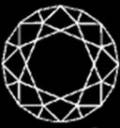 | This shape is most common for all the gem shapes. Round/Brilliant accounts for more than 75% of gems sold at The Shining Diamond. Its 58-facet cut, divided among its crown (top), girdle (widest part) and pavilion (base) which is designed to achieve the maximum in fire and brilliance. |
| Oval Cut | 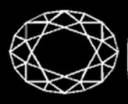 | This is an even, perfectly symmetrical design popular among women with small hands or short fingers. Its elongated shape gives a flattering illusion of length to the hand. It also allows for slicing out a perfect gemstone in an otherwise heavily flawed piece of raw stone. |
| Marquise Cut |  | This is an elongated shape with pointed ends inspired by the fetching smile of a famous Marquise jewelcrafter from the Suvan Empire. It is gorgeous when used as a solitaire or when enhanced by smaller gems. It also allows stones to be cut from the faceting of larger stones, so the marquise is often used as an accent to surround a larger setting. |
| Pear Cut | 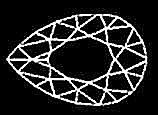 | A hybrid cut, combining the best of the oval and the marquise to form a sparkling teardrop. It also belongs to that category of gem whose design most complements a hand with small or average-length fingers. It is particularly beautiful for pendants or earrings, and isn't necessarily designed flat on one side, but can be often viewed three dimensionally. |
| Heart Shaped Cut | 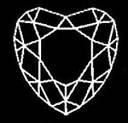 | This ultimate symbol of romance, designed to mimic the human heart. The heart shaped cut is essentially a pear-shaped gem with a cleft at the top. |
| Emerald Cut |  | This is a rectangular shape with cut corners. It is known as a step cut because its concentric broad, flat planes resemble stair steps. Since inclusions and inferior color are more pronounced in this particular cut, take pains to select a stone of superior clarity and color. This is a very striking cut for larger stones. The Emerald Cut is very old and was used by royalty and the upper-class in Alahea. |
| Princess Cut | 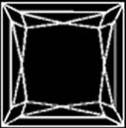 | This is a square or rectangular cut with numerous sparkling facets. The Princess Cut is flattering to a hand with long fingers. Because of its design, this cut requires more weight to be directed toward the gem's depth in order to maximize brilliance ( 70% to 78% depth percentages). |
| Trillion or Trilliant Cut | 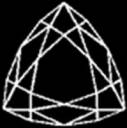 | This is a spectacular wedge of brittle fire. First developed in Alahea, the exact design can vary depending on a particular gem's natural characteristics and the cutter's personal preferences. It may be a traditional triangular shape with pointed corners or a more rounded triangular shape with 25 facets on the crown, 19 facets on the pavilion, and a polished girdle. |
| Radiant Cut | 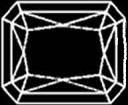 | Very similar to the princess cut at first glance, this square or rectangular cut combines the elegance of the emerald shape gem with the brilliance of the round. It has 70 facets to maximize the effect of its color refraction. |
| Cushion Cut |  | An antique style of cut that looks like a cross between a round and an oval cut that retains the square shape. This is a great hybrid cut that makes stones seem unique or unusual even if they are very ordinary. |
| Banquette Cut |  | This is a rectangular narrow gem cut. It has approximately 20 facets. A tapered baguette is a trapezoid shape one end is narrower. The Banquette Cut is very attractive on someone with short fingers and a small hand. |
| Whirl Cut |  | This is a complex cut. The curves of the whirl add a depth to the gem to allow it to catch more light and therefore refract more light. Since inclusions and inferior color are more pronounced in this particular cut, take pains to select a stone of superior clarity and color. The skill of the jewelcrafter always determines the beauty and success of this cut. |
When Kelski got done drawing and writing, her hand was aching. She wasn't used to sketching things so precisely and with straight lines. But the stones had to be clear cut in their shapes so she could go over them later and study. She had the real life gemstones here to look at to refresh herself, but carrying the journal around and reading its pages would speed up her retention enormously.
She glanced at Li, hoping he was done and would release her for the lesson. But he was busy putting the first tray of gemstones away and taking out one more tray. On it were slightly larger gems, the type you'd hang in earrings or as a pendant. She studied them carefully then began to sketch and label as Li began to talk.

"These are the four other shapes I will require you to know, child." While these are not shapes that are set into settings like rings, they are important because they can be viewed from all angles and in a three hundred and sixty five degree portal. They make up the kind of things we fashion earrings and necklace pendants out of. They are not as hard to cut as you might think, yet they are super important to know. With all these shapes, you have enough information to move comfortably into your Mastership in a few years if you move up the list, first getting use to the brilliant and then finally polishing off the whirl." he added, smiling. "How fast you master these as well will be my test on how good of an apprentice you can become. But remember, jewelcrafting isn't always about the gemcutting. It's about making chain, setting stones, and all kinds of things. It might be that at first you are far better at fashioning settings than you are at cutting the stones. That is fine. We all find our stride and figure out which facets of this craft come easily and which come hard. So I want you to call it a day, take your journal, and go find something to eat. As you relax today, begin to learn this material. I expect when you come back, you will have something of a working knowledge of it." He added with a smile, patting the young kelvic on the shoulder.
"Thank you Master. I will study hard and try to learn as quickly as I can with as much accuracy as I can." She added, not wanting suddenly to disappoint the old man.










